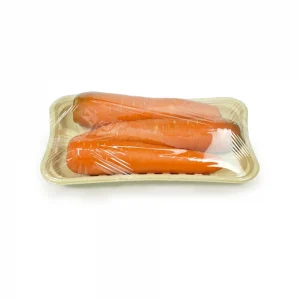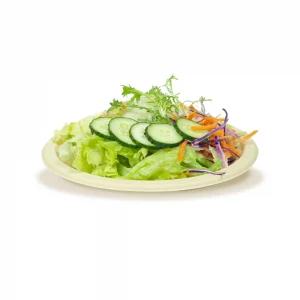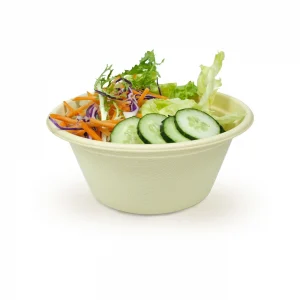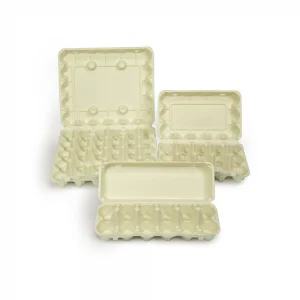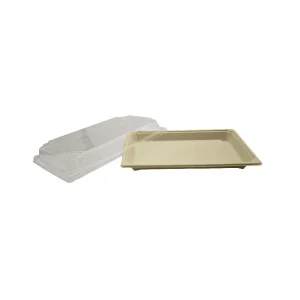Europe is entering a decisive decade for packaging. Driven by the European Green Deal and a surge of environmental regulations, the shift from plastic to sustainable alternatives is no longer optional — it is an economic and strategic necessity. Businesses that continue relying on conventional plastics face rising taxes, volatile raw material costs, and eroding customer loyalty, while those investing in compostable and recyclable packaging gain cost stability, regulatory compliance, and long-term competitiveness.
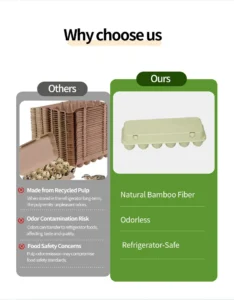
The Hidden Costs of Plastic Packaging
For decades, businesses assumed plastic was the cheapest packaging option. That assumption no longer holds.
1. The EU Plastic Packaging Tax
Since January 2021, EU member states must contribute €0.80 per kilogram of non-recycled plastic packaging waste (source: European Council). While collected at the state level, governments increasingly pass these costs on to producers through packaging levies and national plastic taxes.
Spain introduced a €0.45/kg plastic packaging tax in 2023.
Italy is expected to implement its own levy in 2026.
The UK, although outside the EU, already enforces a Plastic Packaging Tax for products with less than 30% recycled content.
Impact: Plastic is no longer cheap. Each ton of non-recycled plastic packaging now carries significant fiscal penalties that eco-friendly alternatives can avoid.
2. Rising Raw Material Prices
Between 2021 and 2023, plastic resin prices rose over 50%, according to PlasticsEurope. By contrast, compostable and paper-based packaging materials saw a more moderate increase of ~20%. The volatility of oil markets directly translates into unpredictable costs for plastic packaging users.
3. Market Penalties
Consumers are voting with their wallets. A 2023 Nielsen survey shows 68% of Europeans prefer to buy from companies using sustainable packaging, and 63% are willing to pay more for products packaged sustainably. Businesses clinging to plastics face both higher costs and declining consumer trust.
________________________________________
Why Eco-Friendly Packaging Becomes More Profitable Over Time
Switching to sustainable packaging requires initial investment — but the long-term financial logic is clear.
Lower Taxes and Fines
Countries like France mandate 100% recyclable plastic packaging by 2025. Businesses failing to comply face escalating fines and costs. Compostable and biodegradable packaging avoids these penalties.
Stable Material Prices
Compostable supermarket trays made from bagasse, PLA, or paper fiber have more stable cost structures than fossil-based plastics. According to European Bioplastics, increased global production of biopolymers is reducing unit costs by ~10% annually.
Revenue Growth from Green Consumers
Boston Consulting Group data shows companies adopting eco-friendly packaging see 5–10% revenue growth due to customer preference and brand differentiation.
________________________________________
Country-Level Adoption: Europe in Transition
The adoption of eco-friendly packaging is accelerating across Europe:
Germany: 75% of businesses have transitioned; average savings +35%.
France: 68% adoption; average savings +30%.
Spain: 66% adoption; savings +32%.
UK: 62% adoption; savings +28% despite not being in the EU.
Italy: 58% adoption; savings +25%.
These numbers underline a structural shift. Early adopters are already realizing cost benefits while laggards accumulate hidden liabilities.
________________________________________
Five Key EU Regulations Driving the Shift
The legislative environment is rapidly evolving. Businesses must understand five major initiatives reshaping packaging in Europe:
Packaging and Packaging Waste Regulation (PPWR)
All packaging must be recyclable by 2030.
“Design for Recyclability” standards will become mandatory.
Single-use plastic packaging will be progressively banned.
Extended Producer Responsibility (EPR)
Producers are accountable for packaging waste management and recycling costs.
Lightweight, recyclable, and compostable materials reduce EPR liabilities.
EU Deforestation Regulation (EUDR)
Prohibits sales of products linked to deforestation.
Packaging materials such as responsibly sourced paper and bagasse align with compliance.
Single-Use Plastics Directive (SUPD)
Already restricts items like straws, cutlery, and polystyrene trays.
Compostable alternatives are often exempt from bans, making them an immediate solution for retailers.
Plastic Tax and National Levies
The EU levy on non-recycled plastic waste pressures member states to impose national taxes.
Spain and the UK already enforce them; Italy is next.
________________________________________
The Competitive Advantage of Switching Now
Businesses that adopt compostable supermarket trays and other eco-packaging benefit in three dimensions:
Cost efficiency: Avoid rising taxes and raw material volatility.
Regulatory compliance: Stay ahead of 2030 EU circular economy requirements.
Market growth: Win over eco-conscious consumers and retailers.
A comparative study shows that after five years, companies sticking with plastics spend an estimated €12,500 more per 10 tons of packaging than those switching to compostable alternatives.
________________________________________
Conclusion: Acting Early Secures Market Leadership
Europe’s packaging future is circular, recyclable, and compostable. The combination of EU plastic taxes, SUPD bans, and PPWR mandates means the window for delay is closing.
Businesses that act now will not only avoid rising costs but also position themselves as leaders in sustainability — a key competitive differentiator in the European market.
Eco-friendly packaging is no longer a cost center. It is a profit driver, a compliance guarantee, and a customer loyalty engine.
________________________________________
eco-friendly packaging Europe, compostable supermarket trays, EU plastic packaging tax, sustainable food packaging, European Green Deal packaging, PPWR regulation


